GLASS
SIX VARIATIONS IN MOVEMENT
What Movements Does a Glass Vessel Elicit From its Maker?
choreographic installation
Shanghai Museum of Glass, 2019
photo credit: Ye Bing
[choreographic installation]
The project was ignited by an invitation from the Glass Museum of Shanghai to commemorate its eighth anniversary. In collaboration with research-based artist Petra Johnson, we developed six choreographic installations and a twenty-minute final performance, engaging in a dialogue with the space and objects of the museum.
Addressing the notion of ‘thingliness’ as intrinsic to museum exhibitions, we delved into the movements and patterns inherent in the displayed objects and spaces. By reversing the dominant directionality of the ‘making’ process, we translated these patterns into movements, thereby reinterpreting and investigating the thought processes set in motion by the artists and architects of the museum. This exploration enabled us to question further how the objects and spaces, in turn, expand our capacities—both cognitive and corporeal.
Contemplating the nature, production, and application of glass, our intention was to grasp the extent to which the boundary between nature and nurture can be delineated, as well as to understand how the invention of artifacts alters perception of the environment and the potential for interaction with it. The transparency of glass, its capacity to distort light, its durability and fragility, its ordinariness and artistry—all prompted us to question how humanity’s relationship with glass has evolved, shaping human beings alongside it.
Collaborators
Petra Johnson (co-author), Anna Dong (performer), Steph D’Sibö (performer), Lena Kilina (performer), Shu (performer), Mariya Spitsyna (performer), Wang Jiaming (performer), Wang Yueming (performer), Wu Jiayu (performer), Yuan Yang (performer), Zhouzhou (performer).
Movement 1. What is the nature of time?
The first movement commences with a childhood game, once ubiquitous across the globe. From there, it delves into a juxtaposition between clock time—the perpetual perishing present—and psychological time, a dynamic interplay between past, present, and future.
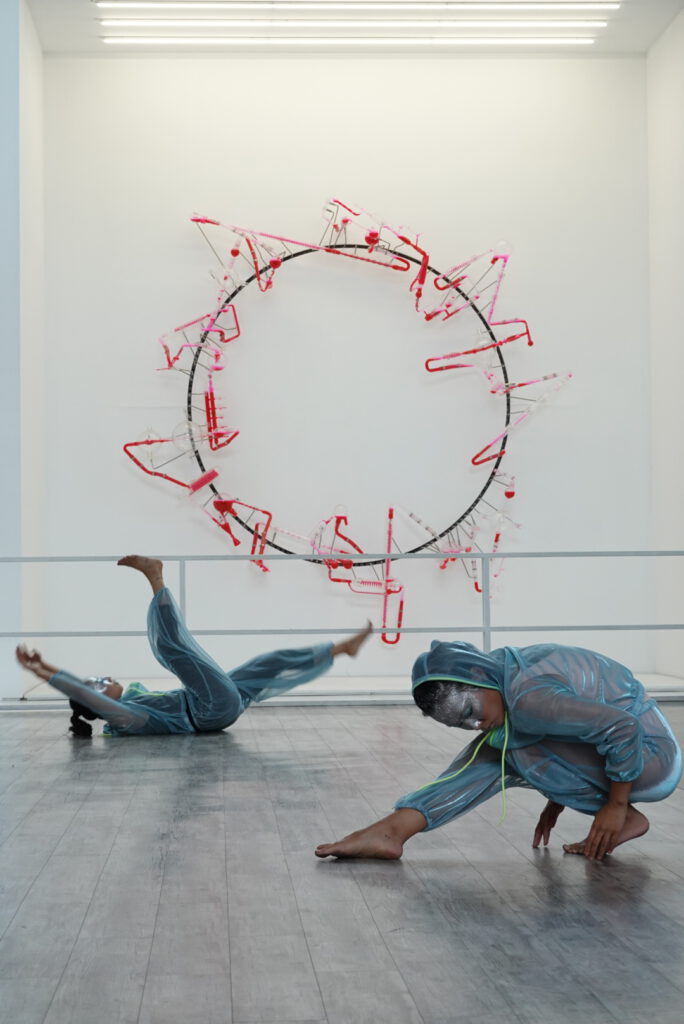
photo credit: Ye Bing
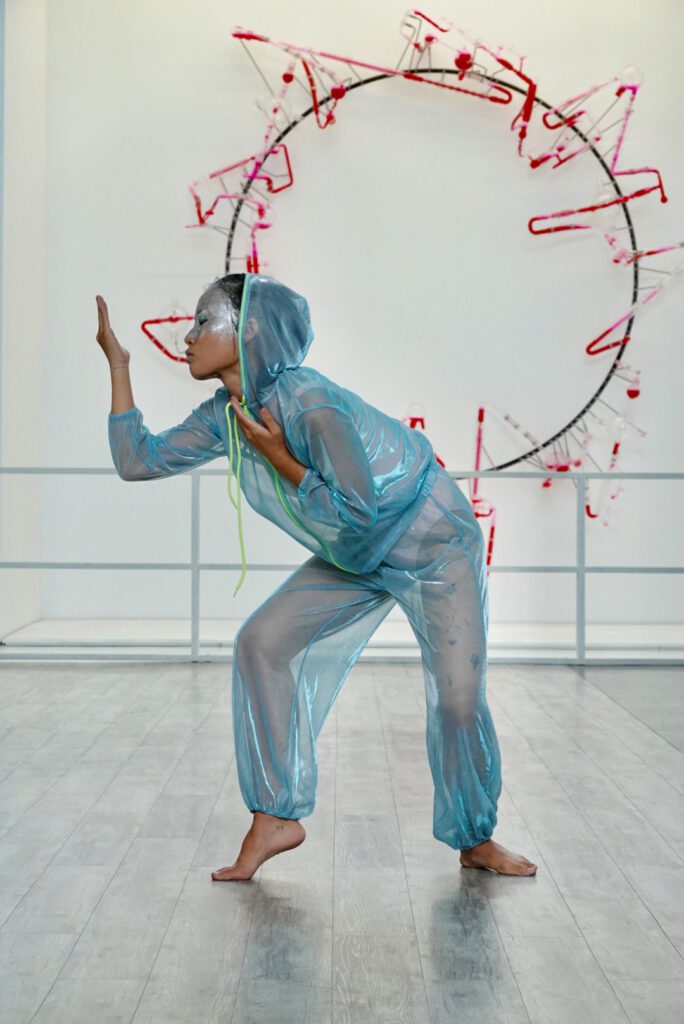
photo credit Ye Bing
Movement 2. What movements does a glass vessel elicit from its maker?
The second movement explores spinning—a gesture choreographed by glass during the process of its becoming. Among the oldest human crafts, spinning converted fiber into thread, evolving condensed mass into a linear order. In the realm of glassblowing, spinning harnesses centrifugal force to create symmetry. As the glassblower rotates a hollow stick with molten glass at its end, she shapes this mass into form. However, this process is time-sensitive; there exists only a brief window of malleability for the glass. Similarly, the human body has an ability to spin and maintain equilibrium only for a limited duration before requiring to reorient itself in space.
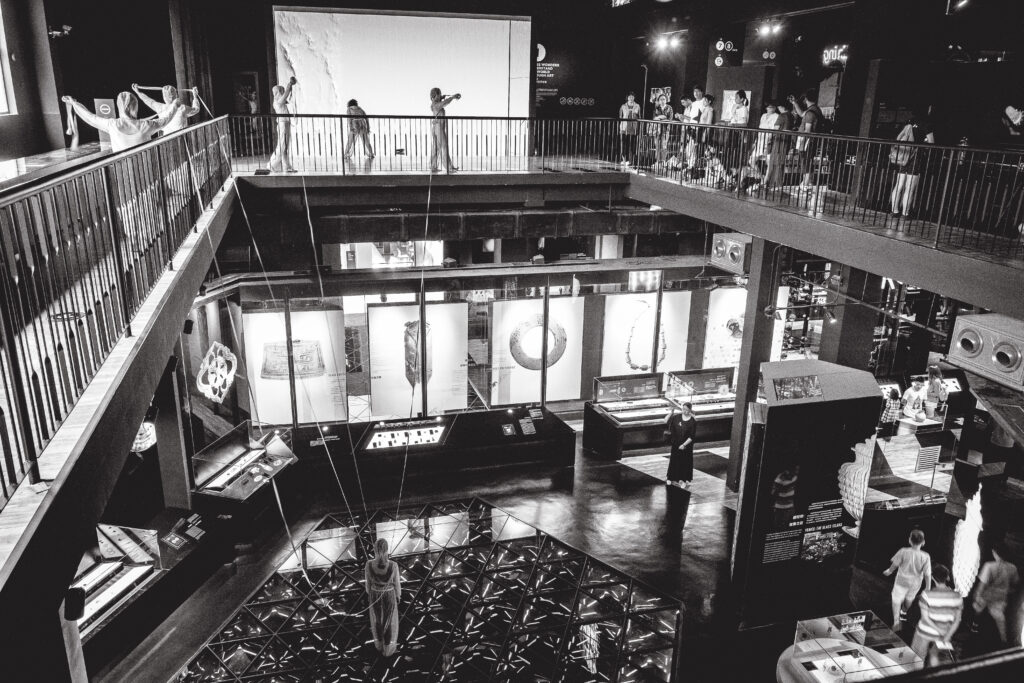
photo credit: Ye Bing
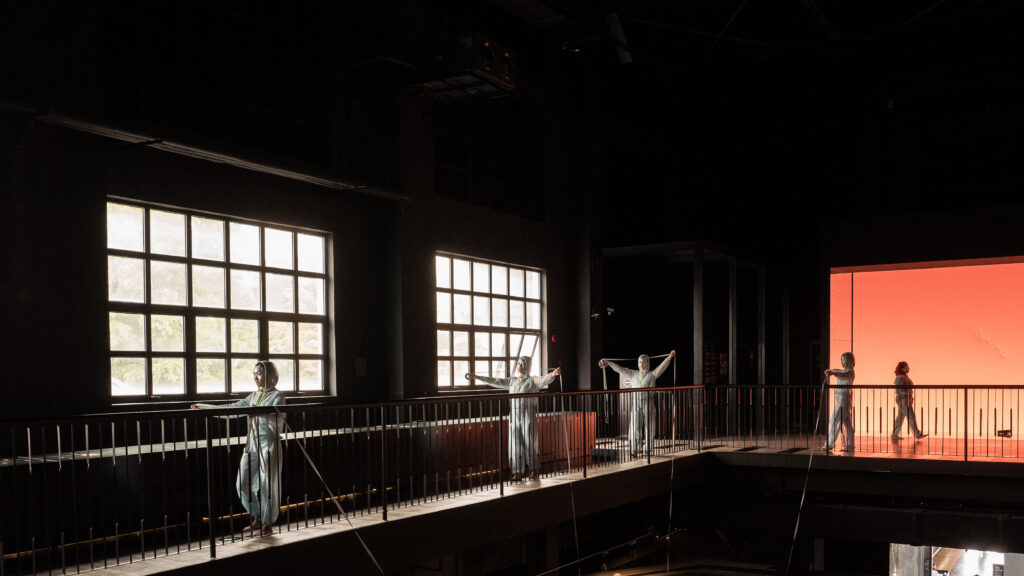
photo credit: Ye Bing
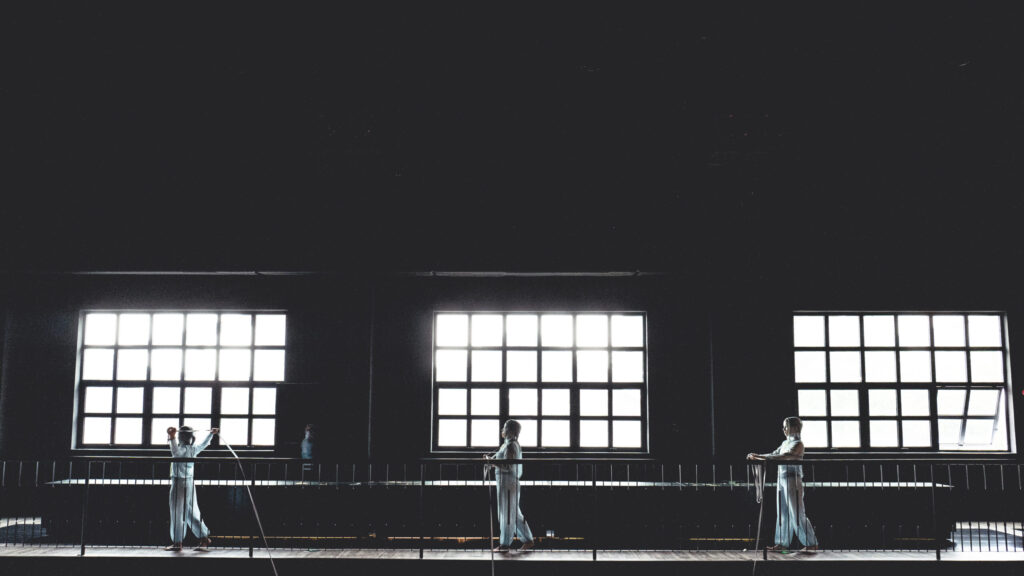
photo credit: Ye Bing
Movement 3. Microscopic vision and perceptual intensification
The molecular structure of glass, though seemingly chaotic, is upheld by robust chemical bonds. Yet, when subjected to excessive external force, these bonds weaken, leading to fracture. Similarly, the human body, in its quest for equilibrium, navigates a delicate balance of a thousand minuscule movements. However, any external force, whether physical or psychological, has the potential to disrupt this balance, shattering the tranquility of stillness.
In this movement, professional equilibrist Wang Jiaming embarked on a captivating exploration of equilibrium, pushing the boundaries of physical endurance and concentration. For twenty-four minutes at a time, he aimed to maintain perfect stillness, perched upon a plexiglass board and cylinder amidst a setting of delicate china.
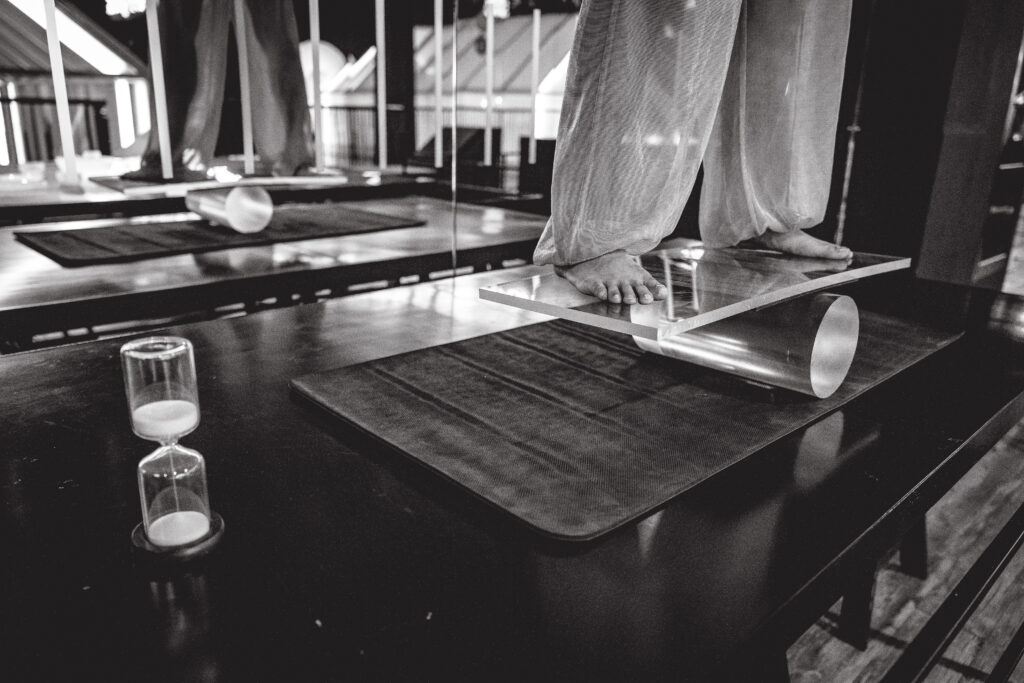
photo credit: Ye Bing
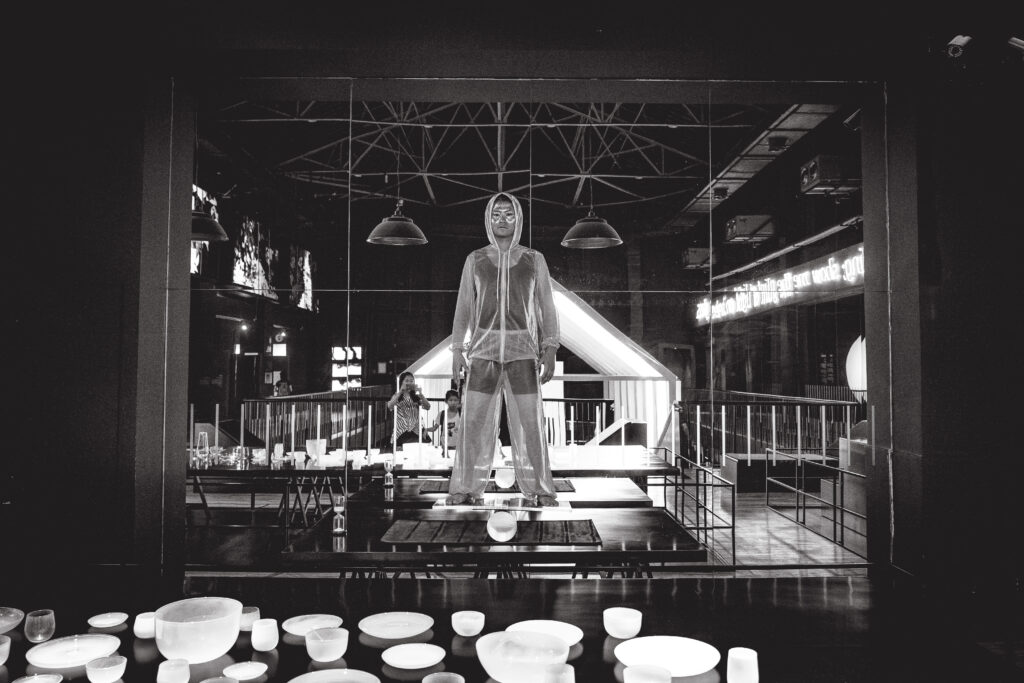
photo credit: Ye Bing

photo credit: Ye Bing
Movement 4. Becoming other
Glass undergoes a remarkable transformation during its production process. From a humble grain of sand, it is transformed into a fiery element, capable of melding solid pieces into a fluid mass. As the substance is heated, it expands and takes shape, eventually becoming fragile glassware. Finally, the solid glass can be transformed into radiant light, shooting along straight lines of a reflecting ray.
In this performance, held in dialogue with the interactive multimedia installation Fusion, dancer Steph D’Sibö led the audience on an alchemical journey. From the inception of a grain of sand to the fiery flame that melts it, and ultimately to the luminous light that refracts upon encountering glass, she explored the extraordinary metamorphosis inherent in the art of glassmaking.

photo credit: Ye Bing
Movement 5. Echoes, ripples and repetition
In Ancient Greece, long before vision became the dominant sense of civilization, emphasis was placed on the perception of sound. In Greek theatre, the chorus played a vital role in vocalizing the events unfolding on stage and conveying them to the audience. It also served to bridge the physical space between the audience and the stage, leaving intricate patterns on the circular sandy surface and becoming the fourth dimension of the play.
This performance was devised in response to the unique environment of a small chamber of stained glass within the museum premises. At the center of its circular floor, the sound reverberated off the walls and ceiling, amplifying its volume and providing ample opportunities for voice experimentation by sound artist Lena Kilina.
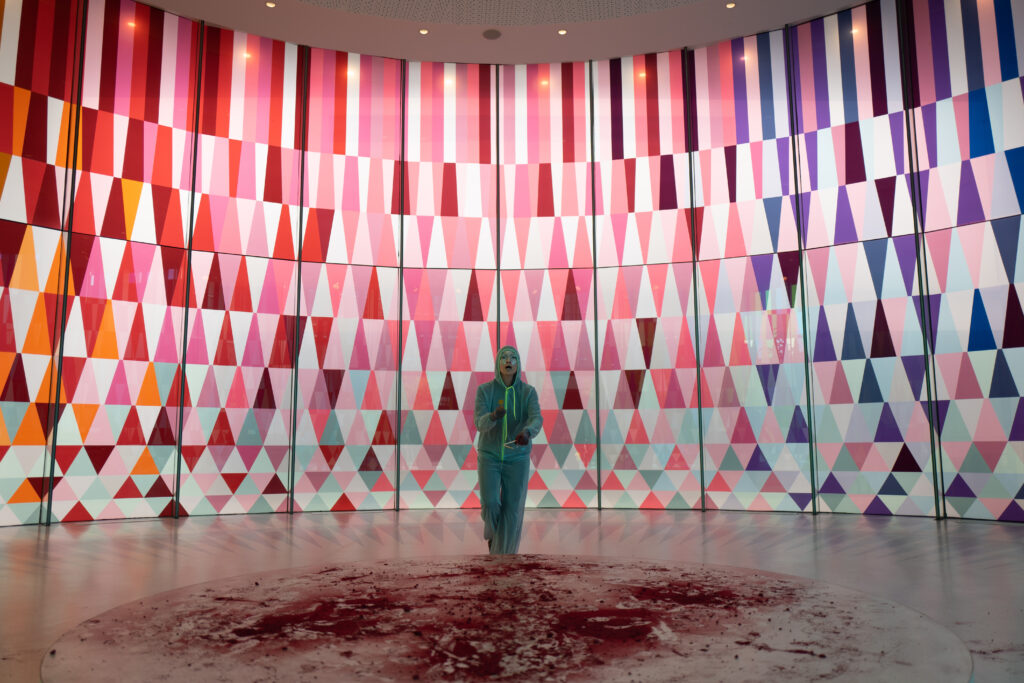
photo credit: Ye Bing
Movement 6. (Re)-cycle of glass
The trajectory of glass forms a circular journey, leading us back to the concepts of time and movement explored in the previous variations. The combination of sand, heat, and motion ultimately results in the creation of an object. However, over time, objects inevitably deteriorate or lose their utility. Glass objects, in particular, fracture into shards. These fragments, carried by movements reminiscent of ocean tides, eventually erode back into sand.
In this performance, I delve into the rhythmic (re)-cycle of glass transformation, subtly altering the repetitive choreography to question the conditions that may interrupt the relationship between time, movement, and matter.
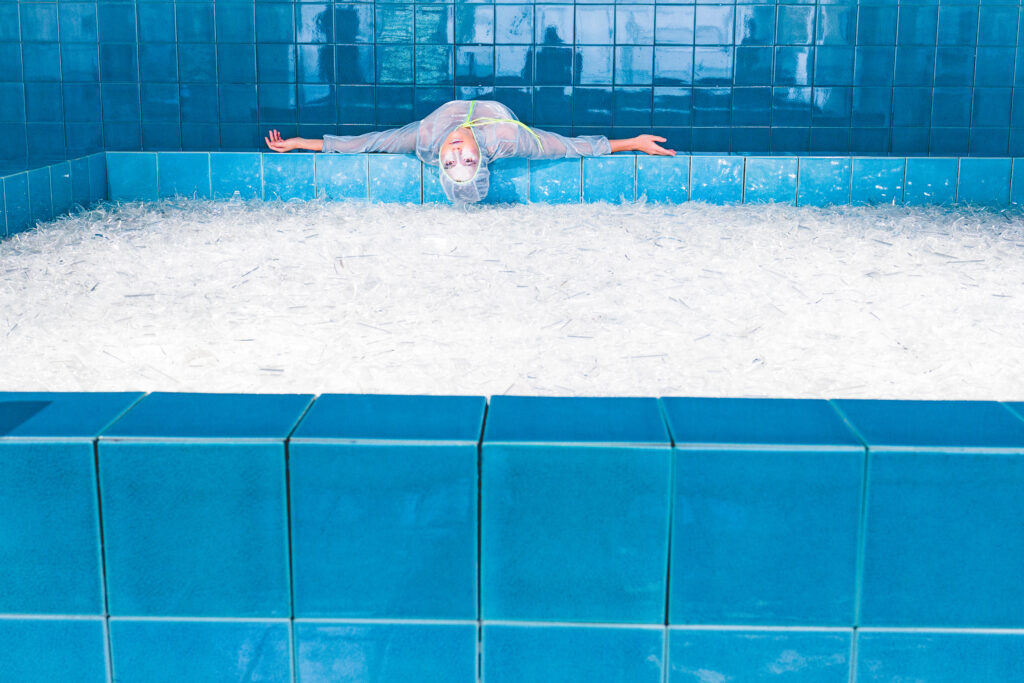
photo credit: Ye Bing
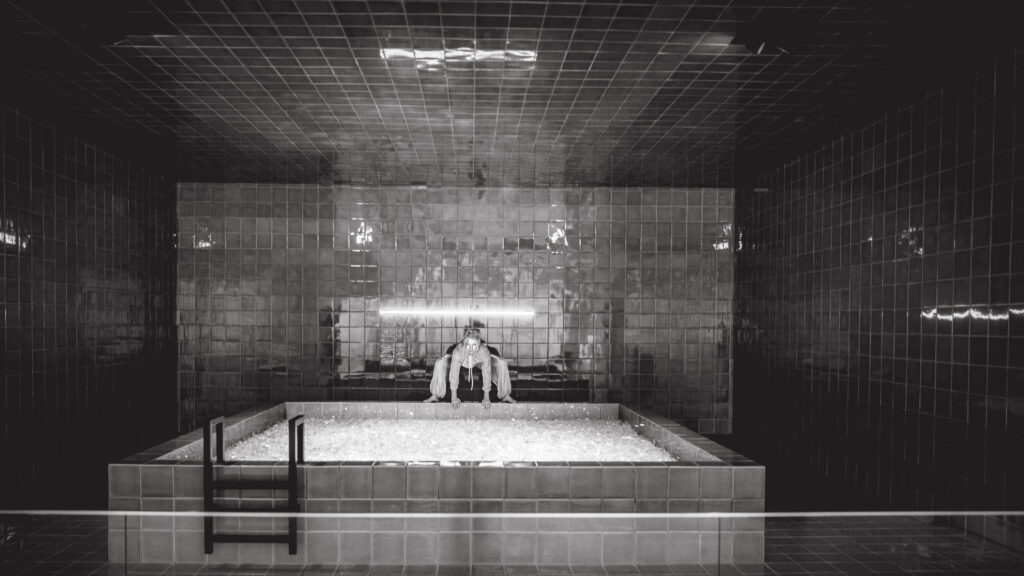
photo credit: Ye Bing
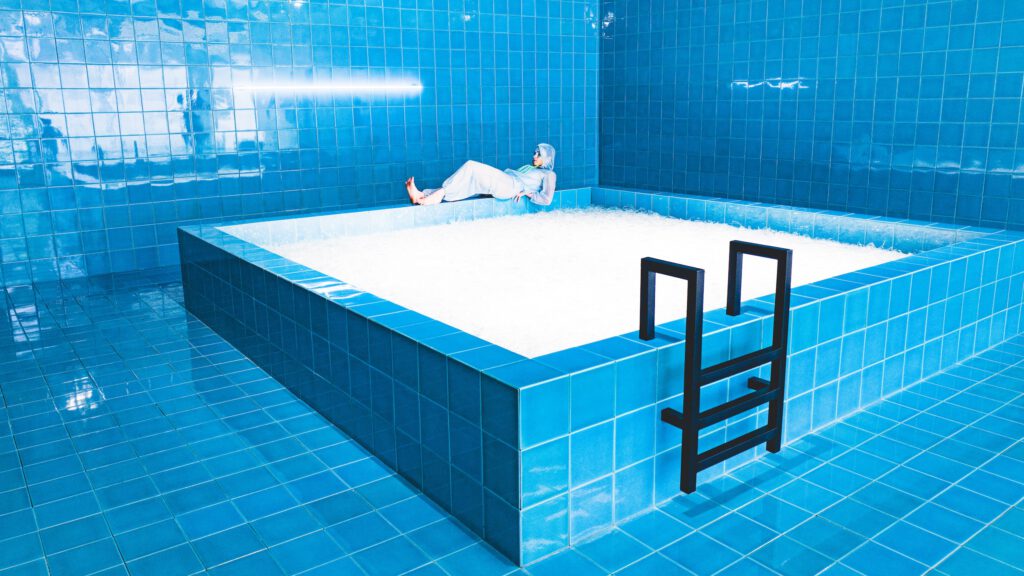
photo credit: Ye Bing
Movement in full shot frame: Concealed presences
Glass is often underestimated as an invention, yet it stands as a cornerstone of technological advancement. Its presence in optical fiber allows for the transmission of vast amounts of data, while instruments like the Hubble telescope utilize glass components to reveal the mysteries of the universe. Beyond its practical applications, glass has influenced not just art, but also philosophy and science, shaping our understanding of the world. If we were to fully recognize its importance, modern history might aptly be called the Glass Age.
Childish actions, such as catching sunbeams in a mirror, belie the profound impact of glass on human history. Through advancements in glass technology, we gained the ability to manipulate light using prisms and mirrors. Movement in Full Shot Frame offered a panoramic view of extended objects and human capabilities, highlighting the amorphous nature of glass and its remarkable properties of refraction, reflection, and transmission of light.
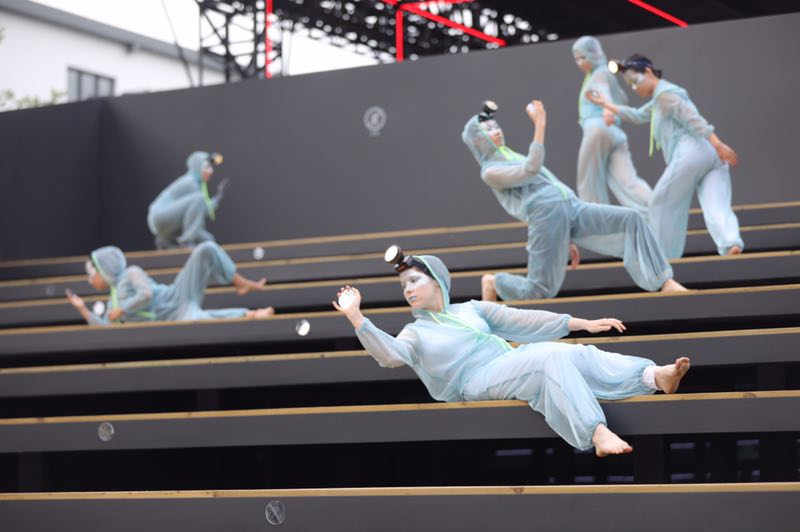
photo credit: Ye Bing